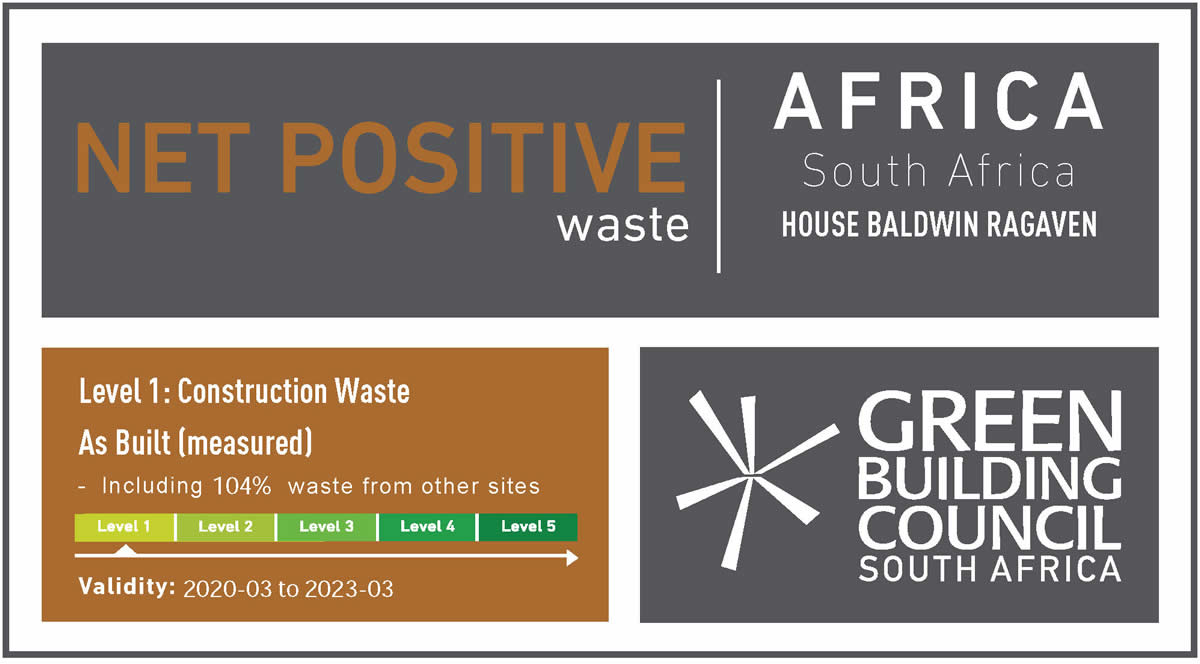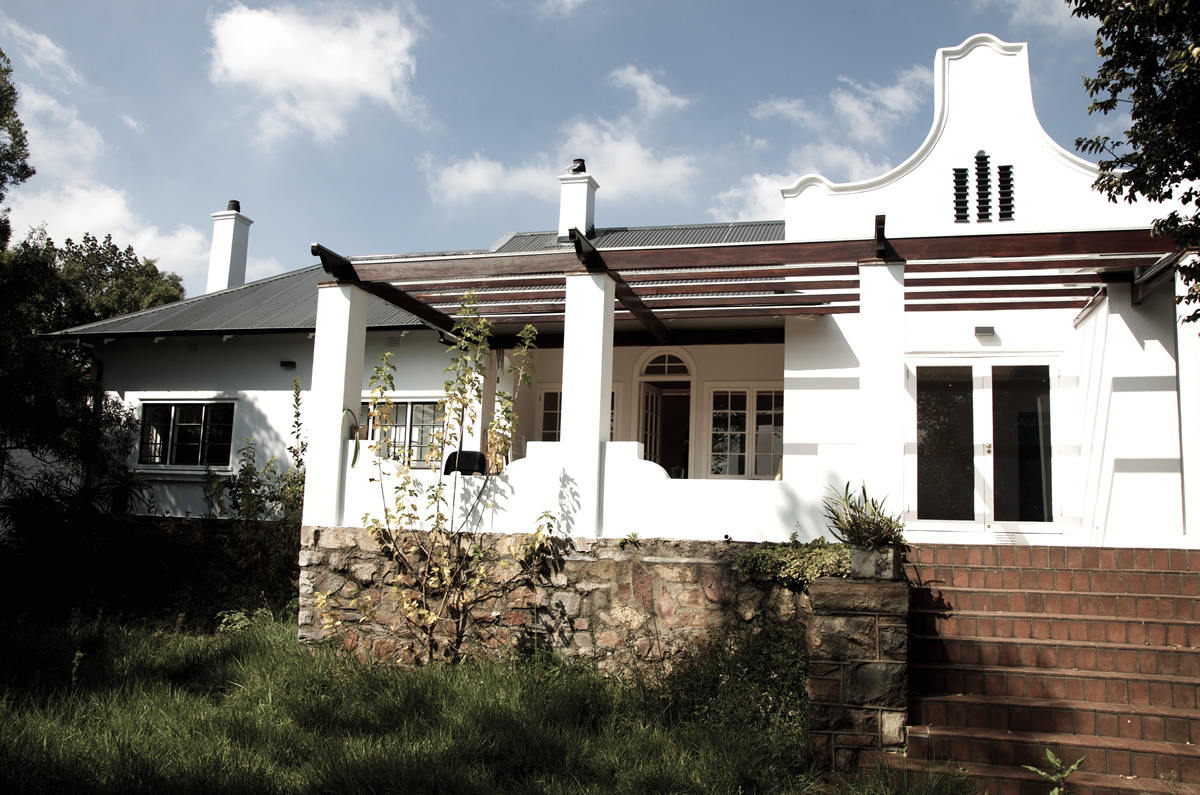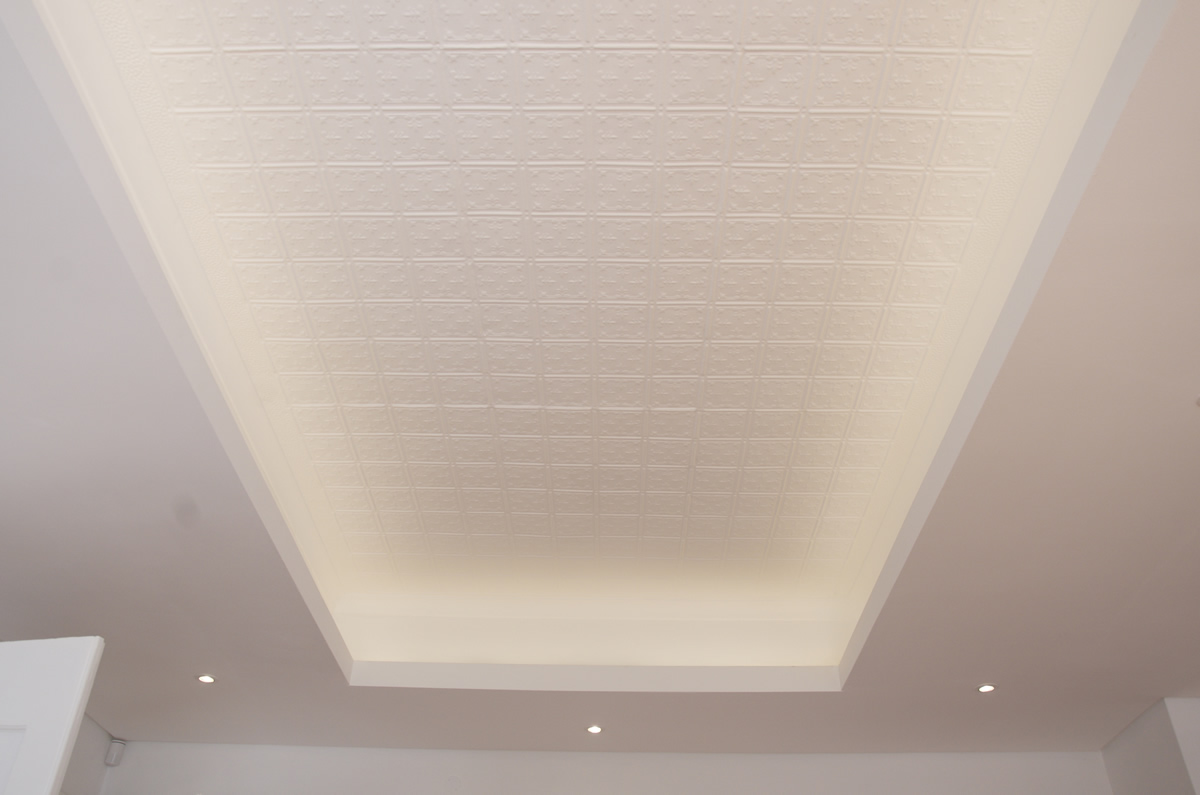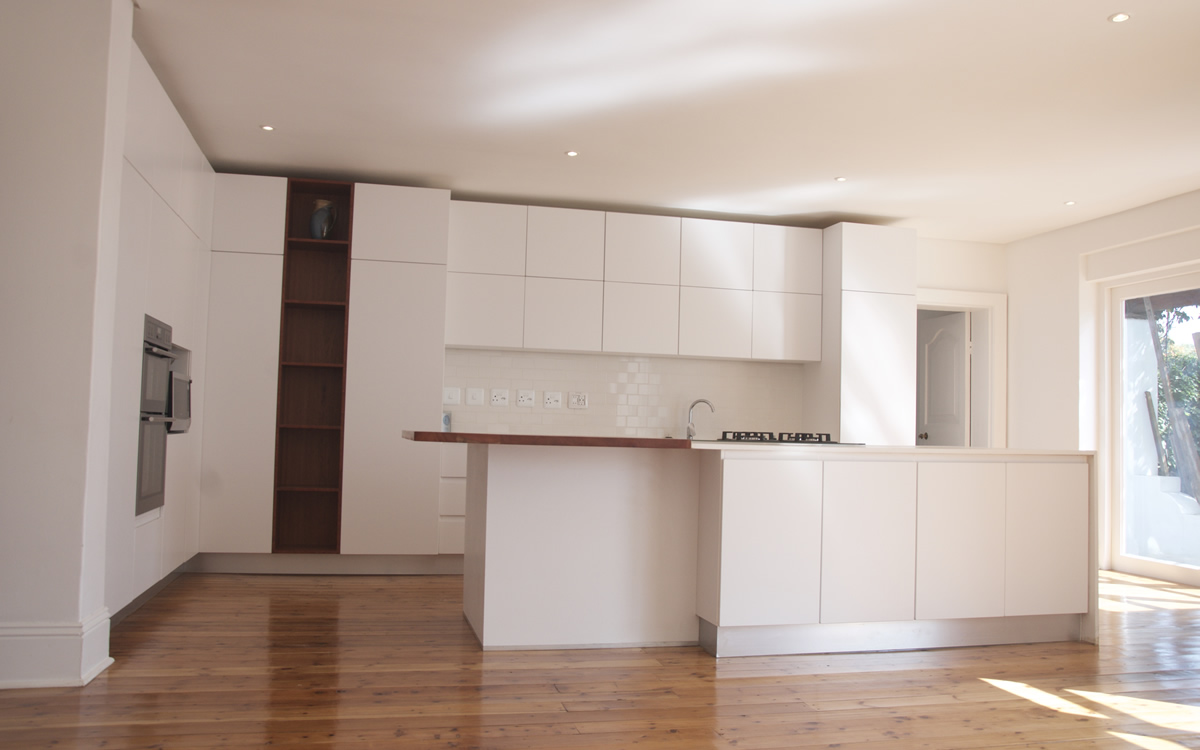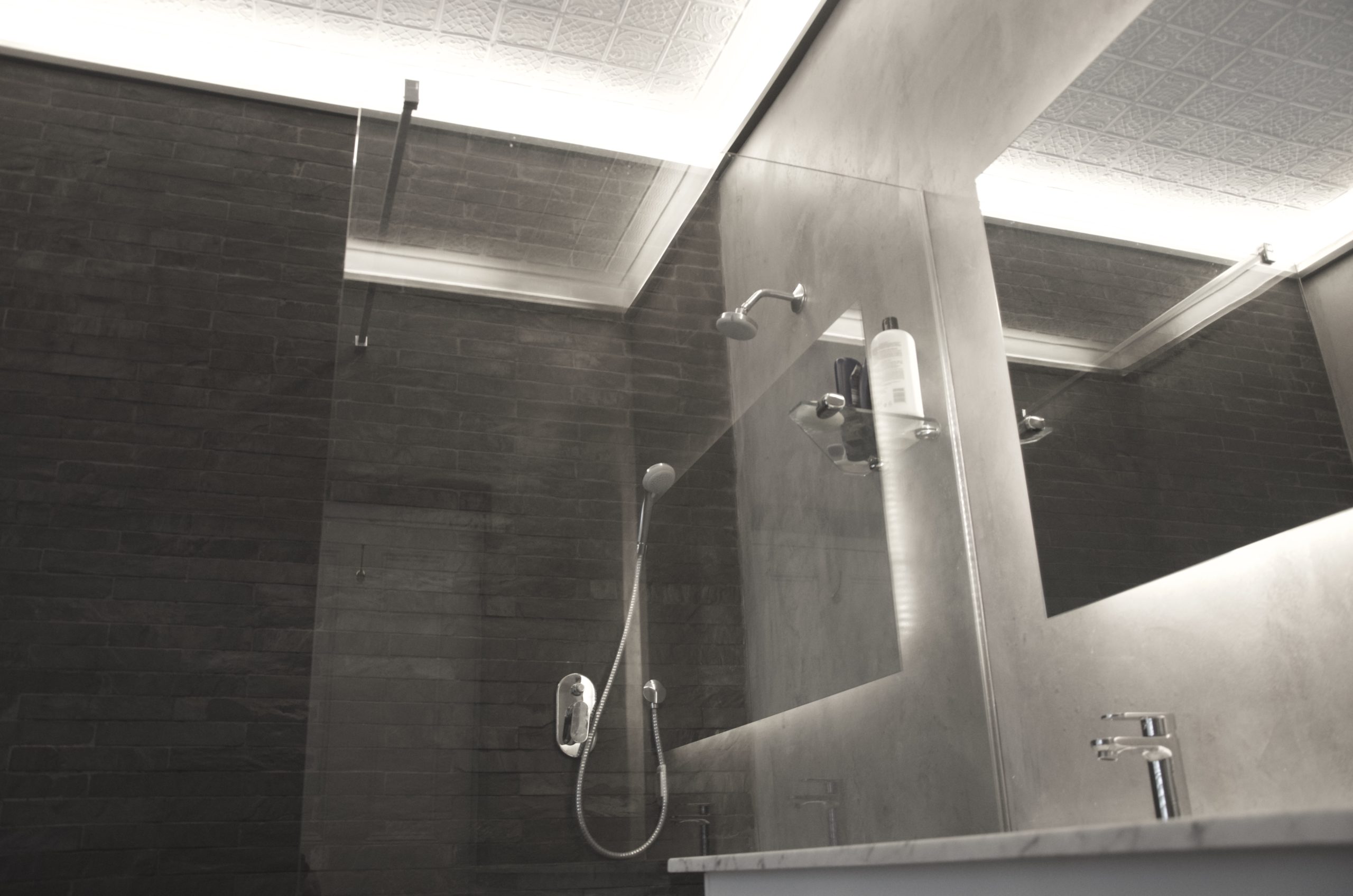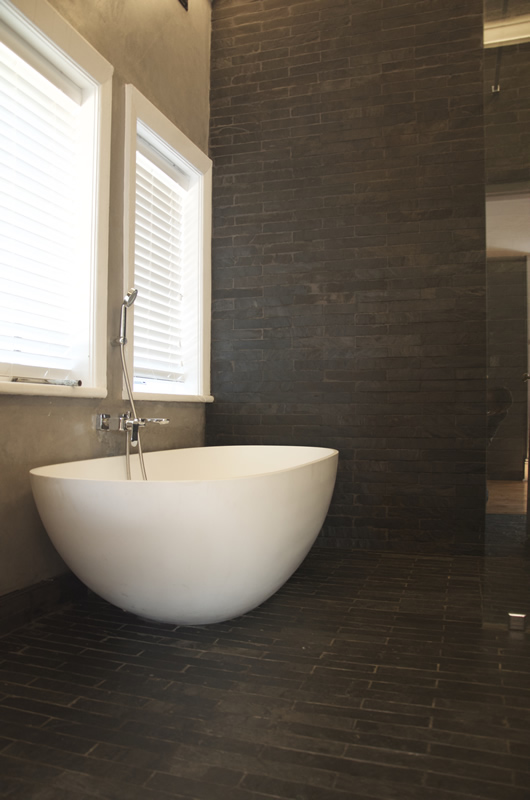Parktown Heritage
Parktown West, Johannesburg
This project is a contemporary alteration and addition to a heritage Cape Dutch house in Parktown West. The original house was built in 1915 and so is over a hundred years old. The house was not in a livable condition and so the brief was a major renovation of the entire home and outbuilding including increasing it’s footprint slightly. Led by the architects the attitude of the professional team and contractor was one of reuse and recycle. Strict heritage sensitivity and a tight budget helped the team creativity reuse items that would ordinarily have gone to land fill.
The team works so effectively that they exceeded their goal of a NET ZERO WASTE project and achieved NET POSITIVE, a first for the country.
Project Initiatives
This project generated just under 90 tons of construction waste. The GBCSA’s definition for a NET POSITIVE WASTE building is 5% above the total mass of construction waste produced must be waste from other sites that is reused on a project. This project was able to achieve 104% above total mass of construction waste generated. What this means practically is not only did no construction waste go to landfill but the entire construction waste of a project of similar size was diverted from landfill and used as a resource on this project. This is a tremendous achievement that sets a new standard for construction waste recycling and showcases that Johannesburg has great potential in becoming a leader in building contemporary architecture using what is termed as “waste”.
Additionally the project uses natural gas for water heating and cooking as well as rainwater harvesting for irrigation.
The landscaping is mostly of indigenous plants from the area’s historic Highveld biome.
This project though small shows that even residential renovations have an important role to play in the green building movement.
Project Obstacles
The South African construction industry in general is extremely wasteful. The greatest obstacle on this project was setting up an effective monitoring system that the contractor could use to document all waste types to achieve NET ZERO.
On this project a tight budget and very strict heritage requirements meant the contractor had to be extremely delicate in the way he built. This helped the project see opportunities to reuse and recycle aspects that would normally have been replaced by new or sent to landfill. Central to making sure no waste “fell through the cracks” was how the site operated.
Waste areas for large waste types such as timber, sheet and rubble were carefully managed in designated areas, while smaller waste types such as packaging were under the responsibility of sub-contractors themselves. This shared responsibility between contractors, professionals and the client meant a project where all gave input on possibilities for innovation regarding waste.
Another obstacle was the additional cost associated with the admin around a rating of this nature on such a small project. However true to the ethics of the team even these cost were shared with the submission costs to the GBCSA being shared equally by the client, the architect and the contractor. When you have a team with the right leadership, vision and mission even small projects can make a big impact.
SUSTAINABILITY RATING
%
